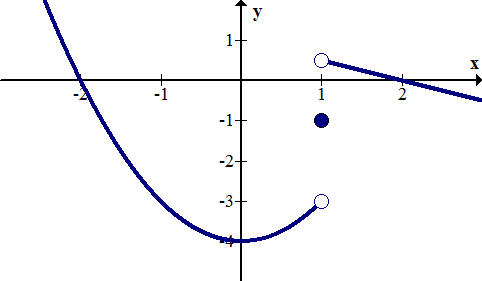In a limit, what is the difference between #lim_(x->a)#, #lim_(x->a^-)#, #lim_(x->a^+)# where #ainRR#?
2 Answers
Explanation:
This means it approaches a certain value from only one side.
Example
graph{(x^2+1)/x [-10, 10, -5, 5]}
On the other hand,
Consider a Function:

Here,
Then consider the limits as we approach
For
#lim_(x rarr a^- \ )f(a)=-3# ,
Similarly
#lim_(x rarr a^+ \ )f(a)=1/2# ,
Even though
# lim_(x rarr a \ )f(a)#
does not exist as the LHS limit does not equal the RHS limit.
The last point is critical as it shows that the value of the limit at any particular point does not necessarily have to be the same as the value of the function at the point. If the two are the same the function is said to be "continuous" at that point; otherwise it is "discontinuous" (as in this example)


